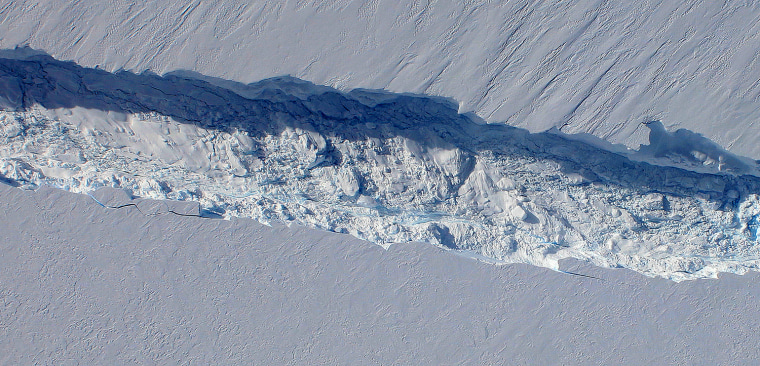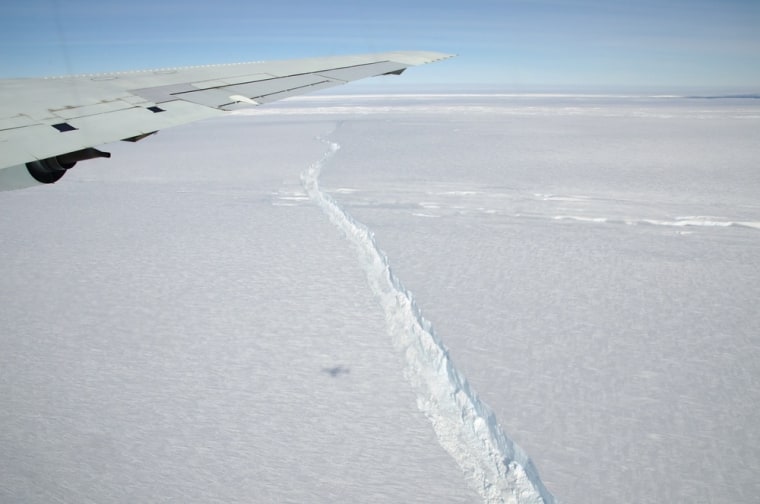Scientists on an aerial survey of Antarctica have come across an 18-mile-long break in an ice shelf — a sign that the sensitive area is giving birth to an iceberg that will be larger than New York City.
"We are actually now witnessing how it happens," Michael Studinger, project scientist with NASA's IceBridge survey, said in a statement Wednesday. "It’s part of a natural process but it’s pretty exciting to be here and actually observe it while it happens."
The scientists were aboard a NASA jet on Oct. 14, making measurements of Pine Island Glacier and its ice shelf, when they came across the crack.
Glaciers naturally give birth to icebergs, but scientists are concerned that warming temperatures might be destabilizing those in Antarctica and Greenland by eroding the ice shelves floating on water that hold them back up against the mainland.
Without the ice shelves, those glaciers could flow much faster into the ocean, raising sea levels.
Scientists call Pine Island Glacier "the largest source of uncertainty in global sea level rise projections," NASA noted in its statement.
"It is likely that once the iceberg floats away, the leading edge of the ice shelf will have receded farther than at any time since its location was first recorded in the 1940s," NASA noted.
The team estimated the ice might finally break away from the shelf "in the coming months" now that the Southern Hemisphere is entering its summer.
Pine Island Glacier last calved a large iceberg in 2001.
The NASA team measured the rift at about 820 feet apart at its widest, and about 260 feet wide along most of the crack.
The deepest points were nearly 200 feet.

The ice shelf around the rift is about 1,640 feet thick, the team estimated.
"When the iceberg breaks free it will cover about 340 square miles of surface area," NASA stated. By contrast, New York City comes in at 302 square miles.
As far as icebergs go, however, 340 square miles isn't anywhere near a record. A few have topped several thousand square miles and the record is a 12,000-square-mile behemoth spotted in 1956.
